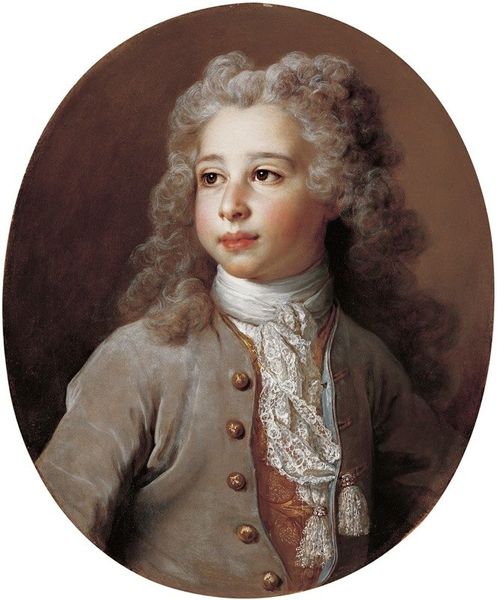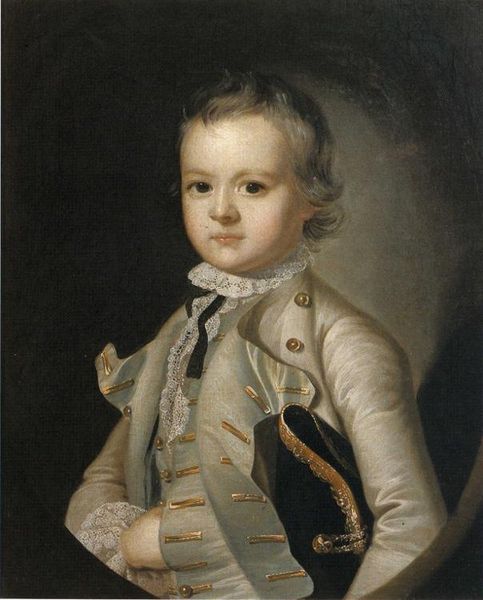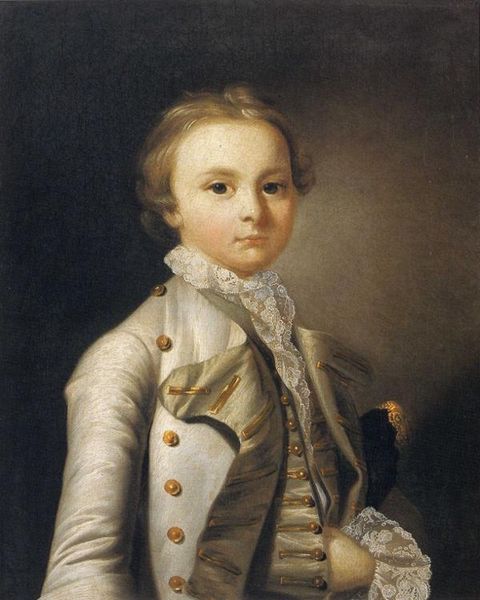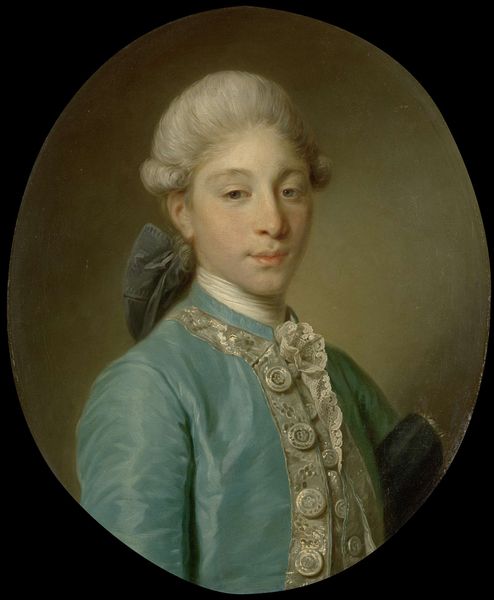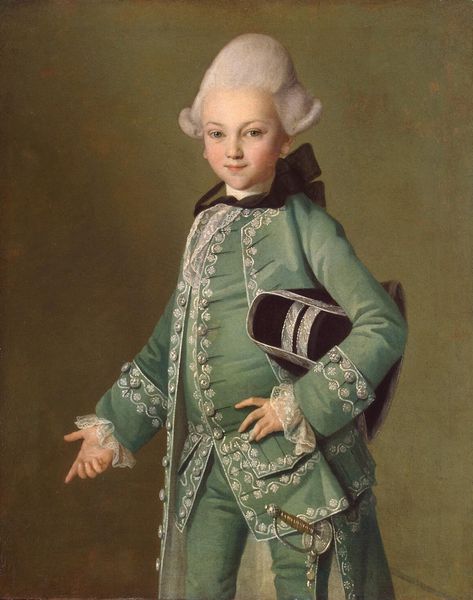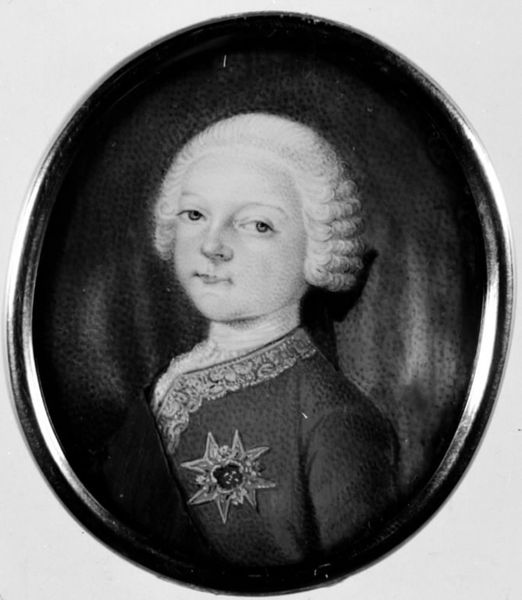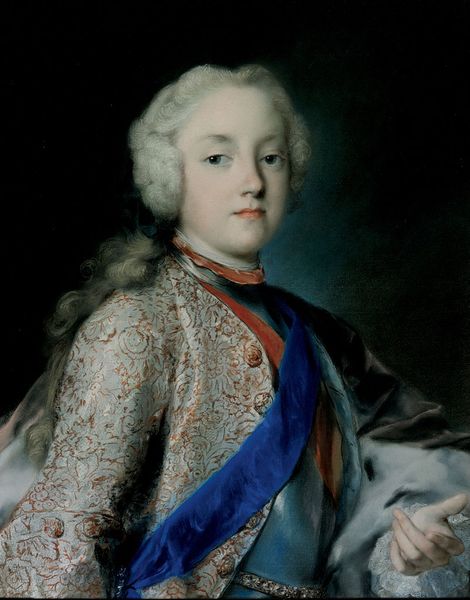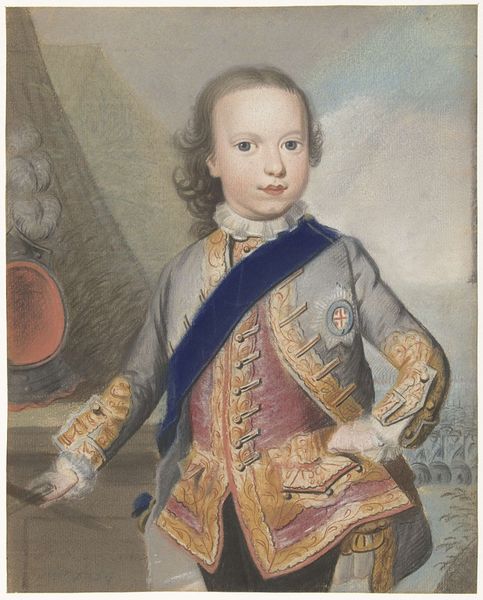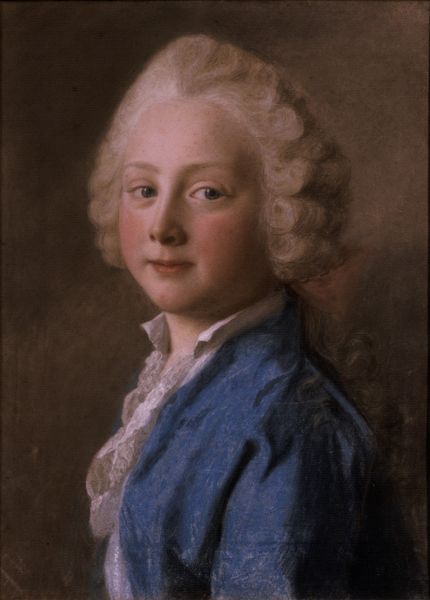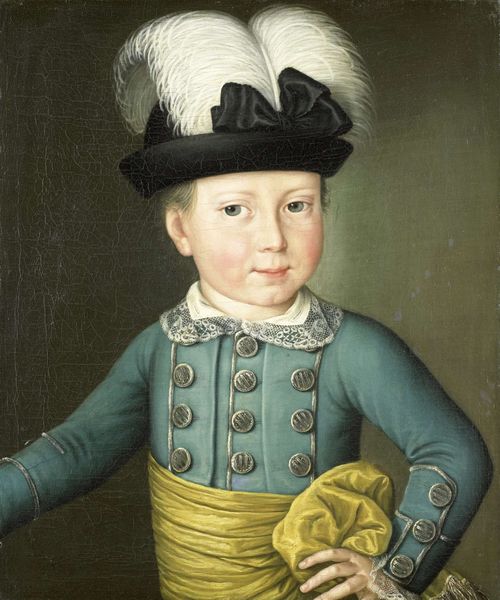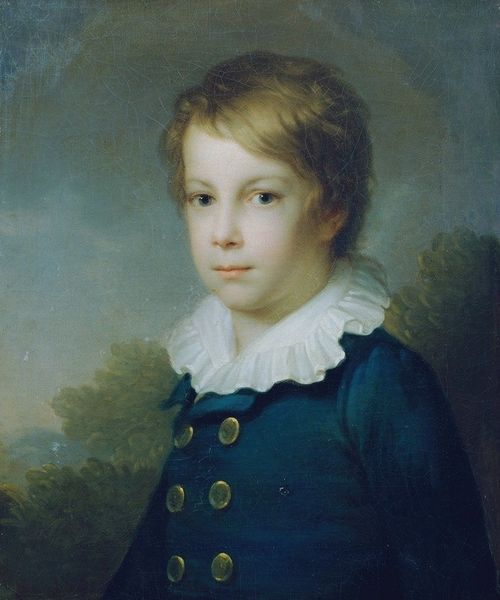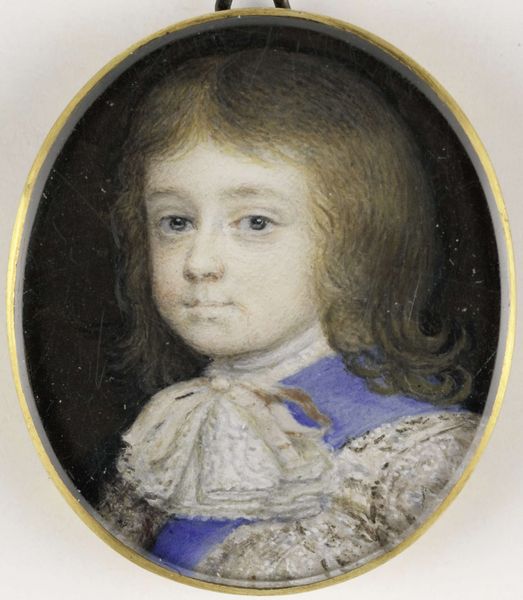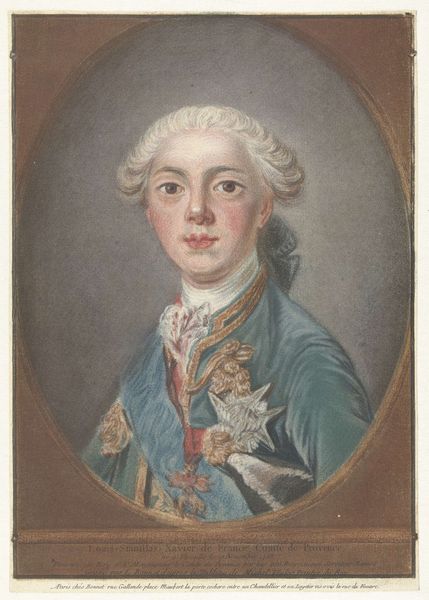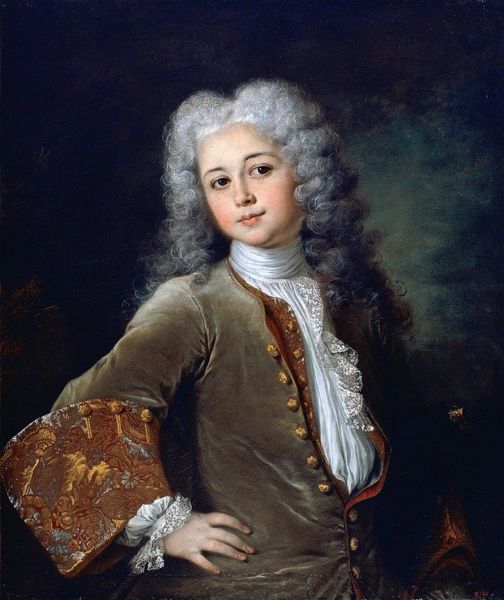
painting, pastel
portrait
painting
figuration
pastel
rococo
Copyright: Public domain
Why do we traditionally associate certain colours with certain genders? Has this always been the case? Painted by Maurice Quentin de La Tour in the 1740s, this is a portrait of Louis, Dauphin (prince) of France as a child. Louis was the eldest son of Louis XV, but died in 1765 before ever becoming king. The work is now housed in The Louvre. Maurice Quentin de La Tour (1704-1788) was a French portraitist who specialised in pastel paintings of the aristocracy and nobility. He worked in the ‘Rococo’ style, which was characterised by elaborate ornamentation and decoration. Louis wears a white powdered wig – the height of fashion in the French court! Here, the prince gazes out towards the viewer, smiling slightly. His deep brown eyes are striking against the light, soft shades of his wig. What strikes you about this portrait? You’ve probably noticed that Dauphin Louis is wearing a pale pink coat, complete with ruffled embroidery and a blue sash ribbon. The areas of highlight on his coat create an impression of shining silk. During the eighteenth and nineteenth centuries, pink was actually seen as a colour best worn by boys. This is because red was associated with masculine power and authority (royal soldiers often wore bright red jackets). As a lighter shade of red, pink symbolised that the boy would grow up to become a highly influential man. On the other hand, the colour blue was seen as soft and delicate. It was associated with femininity due to its ties to the Virgin Mary, so aristocratic girls would often wear blue dresses. These ideas persisted even into the early 20th century! After the 1940s, however, military uniforms began to be made from blue fabric. This meant that it came to be seen as a more masculine colour. During the eighteenth century, men at court would also wear high heeled shoes. They often sported elaborate wigs, and grew their natural hair long. It’s so fascinating to consider how these gender stereotypes and norms have changed over time! ️
Comments
No comments
Be the first to comment and join the conversation on the ultimate creative platform.
